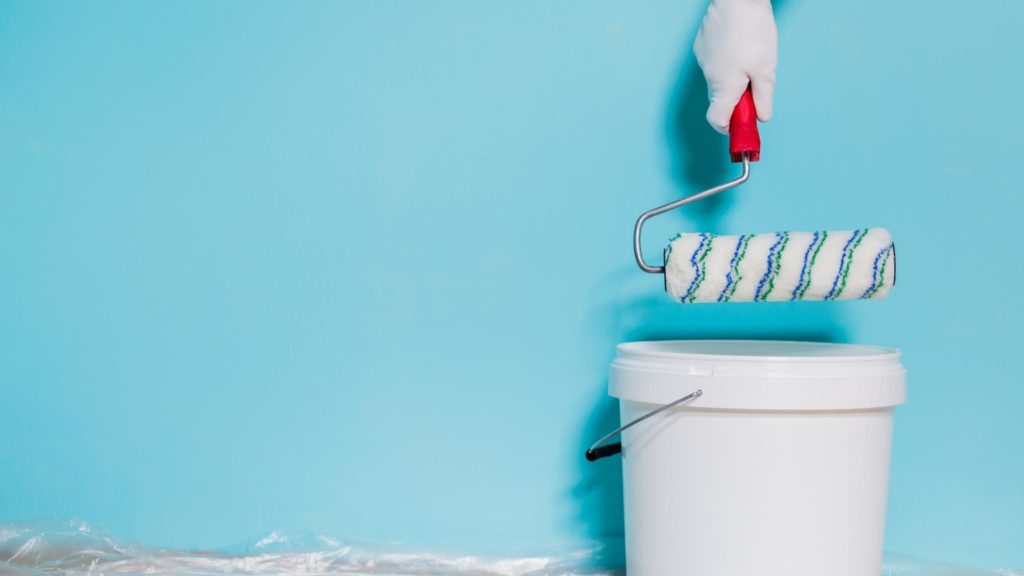Painting stucco with good preparation and painting stucco gives a nice tight result.
Stucco painting often plays into new homes. A plan of action is chosen beforehand on how the walls should be finished. One then opts for plastering or painting the stucco.

Before you start painting you will have to do some preparatory work. Only when you have done this can you start painting. This preliminary work also involves a remote check. When the work is completed, go through it with the relevant plasterer to put the beers on the i. A plasterer often comes back to do this without any obligation. After all, he also wants to put off his business card.
At Stucco painting ensure that everything is sanded super smooth.
When everything has been completed and you want to paint the stucco, you will first have to check whether the stucco is smooth in all places. It sometimes happens that there are still grains on the surface. You then have to sand it off. This is best done with a 360-grit sanding mesh. This gives a super smooth result. This abrasive mesh is a kind of flexible PVC framework. During sanding, this sanding mesh easily removes the sanding dust. Make sure you wear a mouth cap. This is to prevent problems with your airways. Also remember to open windows and doors. The dust that is then released can partially disappear into the open air.
Painting stucco repair.
It also happens that before you start painting stucco that there are pits or holes in the stucco. This is caused by the grains in the product used for plastering. Use a filler that is suitable for this. Finisher is often used for this. Use two putty knives. A narrow putty knife and a wide putty knife. Check the packaging for the ratio of water and filler and stir it well until it becomes a jelly-like mass. After this, apply the filler with the narrow putty knife and take the wide putty knife to smooth it off. Keep the putty skewed, as it were, at a 45-degree angle. This means you don’t have to sand later.
Cleaning beforehand when painting stucco.
You should also always clean before painting stucco. First, remove the dust from the walls. Do this first with a brush and then go over it with a vacuum cleaner. Also vacuum the room immediately. This way you know for sure that the dust has been removed. After this you will degrease the wall. Use an all-purpose cleaner for this. You have to do this otherwise you will not get good adhesion of the paint. After that, also clean the room where you are going to paint the stucco. Then cover the floor with a stucco runner. Now you are done with the first preparation.
When painting stucco, apply a primer latex.
When painting stucco, you must also apply a layer beforehand to prevent a suction effect. If you do not do this, you will not get good adhesion of your wall paint. A primer latex is applied for this. Apply this primer latex to the wall. Do that from the bottom up. This way you can roll away the excess primer on all sides and it is evenly distributed. When you have collected this, wait at least 24 hours before continuing. This primer should soak into the wall and dry thoroughly.
I'm Joost Nusselder, the founder of Tools Doctor, content marketer, and dad. I love trying out new equipment, and together with my team I've been creating in-depth blog articles since 2016 to help loyal readers with tools & crafting tips.

